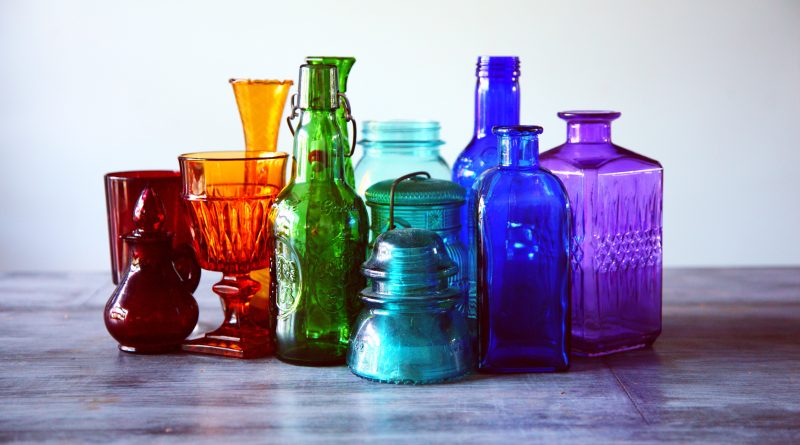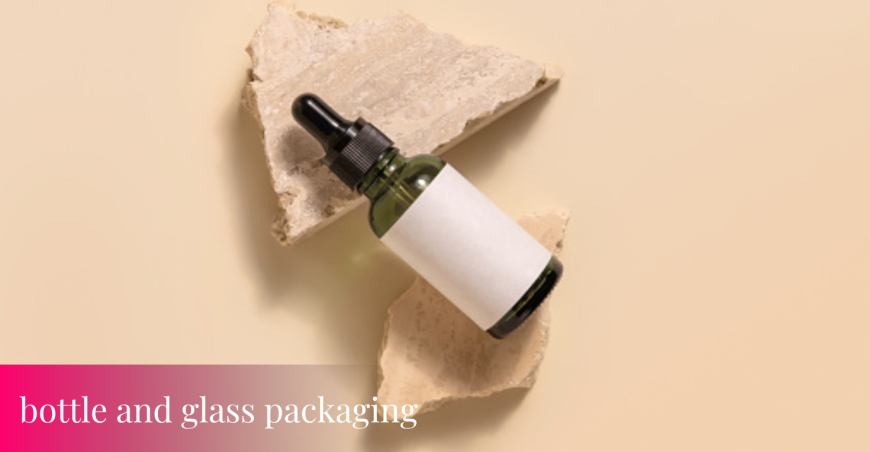Bottled And Jarred Packaged Goods-Uses, Types, Pros And Cons 2022
Bottled and Jarred packaged goods are known for their convenience factor. But like all convenience foods, packaged goods also have some hidden items. However, with a little awareness and knowledge, you can determine what Bottled and Jarred packaged goods are worth it and which are detrimental to your health.
When visiting the market, you will come across different types of food packaging. Some are in food bottles, some in glass bottles, and some in plastic bottles. You will also find food wrapped in foil. Each of these has its advantages and disadvantages with food packaging, in terms of convenience, health, recycling, and disposal.
Packaged goods are those which have been arranged for sale in a particular way. The term can be applied to anything from cosmetics to processed foods. Packaged goods can be found on store shelves or online, and they come in all shapes and sizes. Some common examples of packaged goods include bottled water, jarred sauces, and boxes of cereal. But what are the benefits and drawbacks of these items? Let’s take a closer look.
boxed packaged goods
Boxed packaged goods are becoming increasingly popular as people look for more convenient and sustainable options. There are many different types of boxed packaged goods, each with its own set of pros and cons.

Some of the most common types of boxed packaged goods include:
- Canned goods: Canned goods are often shelf-stable and easy to store. They can be a great option for emergency food supplies or for camping and hiking trips. However, canned goods can also be high in sodium and other unhealthy additives.
- -Dry goods: Dry goods like cereal, granola, and crackers are usually lightweight and easy to transport. They have a long shelf life and can be a healthy option if you choose wisely. However, some dry goods can be high in sugar and calories.
- Frozen foods: Frozen foods are a convenient option that can be stored for long periods of time. They often retain their nutrients better than fresh foods. However, frozen foods can be expensive, and they may not taste as good as fresh options.
- Meal kits: Meal kits contain all the ingredients you need to make a complete meal. They can be a great option for busy families or those who don’t have time to cook from scratch. However, meal kits can be expensive and may not offer much variety.
- tubed packaged goods
Tubed packaged goods are one of the most common types of packaging for food and other consumer products. Tubes are made from a variety of materials, including plastic, metal, paper, and glass. They can be used to package a wide range of products, from liquid foods like soup and soda to dry goods like cereal and pasta.
plastic bottles wholesale
There are many benefits to buying plastic bottles wholesale. For one, it can save you a lot of money. Buying in bulk can often get you a discount, and this is especially true when it comes to plastic bottles. In addition, buying wholesale can help ensure that you have a consistent supply of bottles on hand. This is important if you’re running a business or need to frequently bottle products.
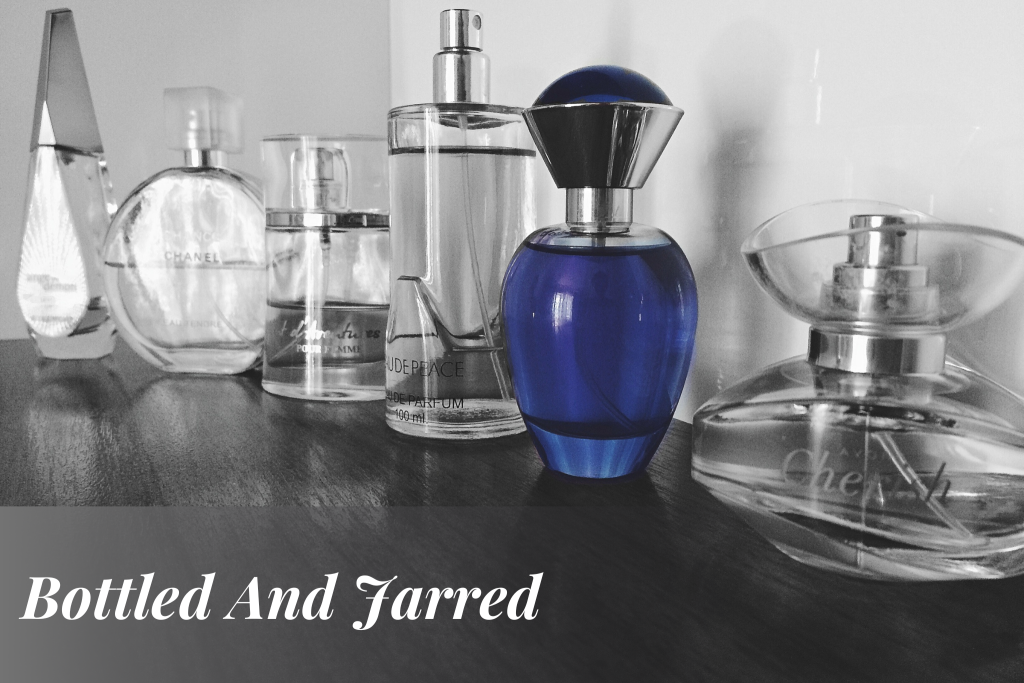
Another benefit of buying plastic bottles wholesale is that it allows you to buy in bulk and store them for later use. This can be helpful if you know you’ll need a lot of bottles in the future but don’t want to spend the money upfront. You can also rotate your stock so that you’re never without bottles when you need them.
There are a few things to keep in mind when buying plastic bottles wholesale. First, make sure to purchase from a reputable supplier. There are many fly-by-night companies selling cheap knockoffs, so it’s important to do your research and make sure you’re getting quality products. Second, always check the price per unit before purchasing in bulk. This will help ensure that you’re getting a good deal and not overspending on your purchase. Finally, be sure to factor in shipping costs when calculating your total cost. Many wholesalers charge high shipping fees, so it’s important to factor this into your final decision
canned packaged goods
Canned packaged goods are those that come in a can or jar. They can be either food or non-food items.

Canned foods include fruits, vegetables, soups, stews, meats, and fish. These products are shelf-stable and do not require refrigeration. Canned foods can be stored at room temperature for up to two years.
Non-food items that come in cans or jars include paints, cleaners, oils, and other liquids. These products often have a longer shelf life than their counterparts that come in other packaging types.
Pouches: Pouches are made of a flexible material, such as plastic or foil, that can be sealed. They are often used for food items, such as dried fruits, nuts, and snacks. Pouches can also be used for non-food items, such as cosmetics, first-aid supplies, and electronics.
Pouches are generally resealable and can be stored at room temperature. Some pouches, however, are designed to be opened and then resealed with a heat-sealing device.
Bags: Bags are another type of flexible packaging. They are made from various materials, such as paper, plastic, or fabric. Bags can be either reusable or disposable.
Reusable bags are often made from sturdy materials, such as canvas or nylon. They can be used multiple times and are typically designed for shopping or storage purposes. Disposable bags are usually made from paper or plastic and are intended for single use only.
Wraps: Wraps are thin sheets of material that can be wrapped around an object. They are often made from paper, plastic, or foil. Wraps can be used to package food items, such as
bagged packaged goods
Bagged packaged goods are items that are sealed in a bag for freshness. This type of packaging is often used for food items, such as produce, meats, and baked goods. Bagged packaging can also be used for non-food items, such as clothing and linens.
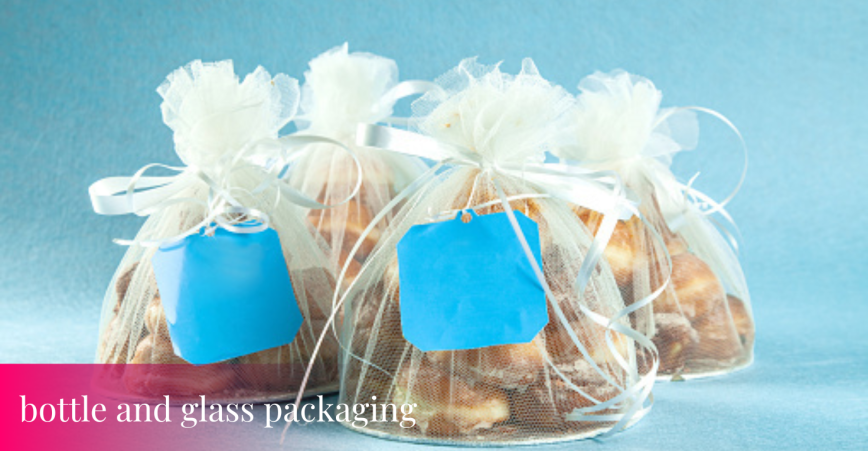
There are several benefits to using bagged packaging. Bags seal in freshness and flavor, keeping food items tasting fresher for longer. Bagged packaging also protects food from bruising and damage. Additionally, bags take up less space than traditional packaging methods, such as boxes or cans.
There are some drawbacks to using bagged packaging as well. Bags can be difficult to open, especially if they are not properly sealing. Additionally, some people find that bagged packaging creates more waste than traditional methods.
If you are considering using packaged goods, it is important to weigh the pros and cons of each type of packaging before making a decision.
How Are Packaged Goods Bottled And Jarred Defined?
Bottles and attached packaged goods have long been available. The use of glass edges dates back to ancient Egypt. For many years, the technology of making bottles was static. But after 1900, things changed. This was the time when the first bottle-making machine was manufactured, resulting in the production of large-scale bottles and packaged goods.
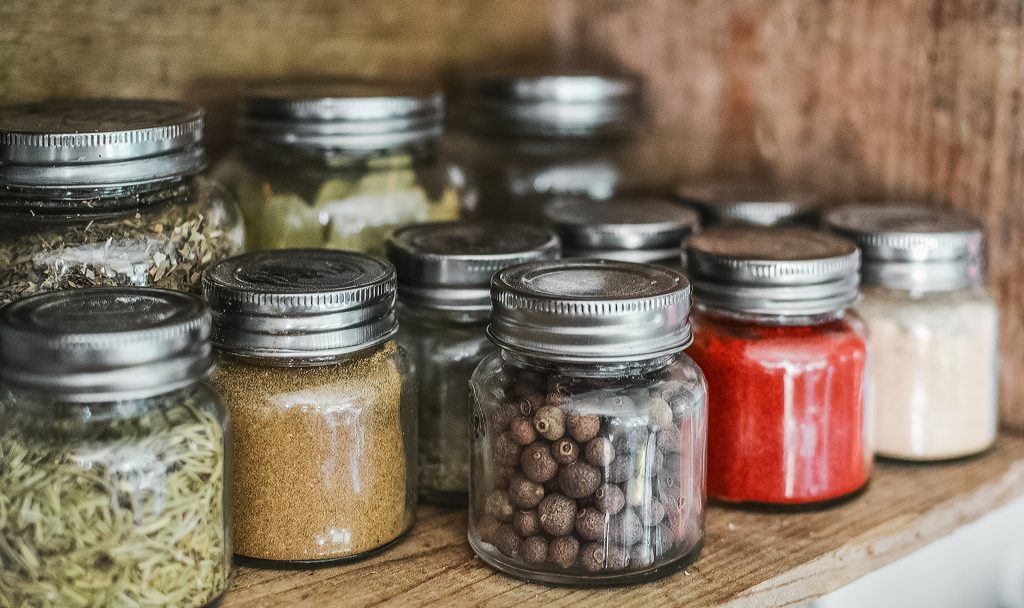
Glass canisters with airtight sticks are widely used for home chemicals. But nowadays, glass jars and utensils compete with plastic bottles and cardboard bowls. There is a high demand for bottled containers despite competition.
Various types of food packaging are available today. The style of packaging is typically chosen based on the product that is packed. Packaging’s main purpose is to protect food. But over the years, Bottled and Jarred packaging has evolved to include other tasks that are beneficial to both customers and manufacturers.
The Pros And Cons Of Different Types Of Food / Packaged Goods Are As Follows
Glass Canisters: Glass canisters are the best packaging for dry goods. It is airtight, lightweight, and aesthetic. Foil Pouches: Available in a variety of sizes, these pouches are made from aluminum foil.
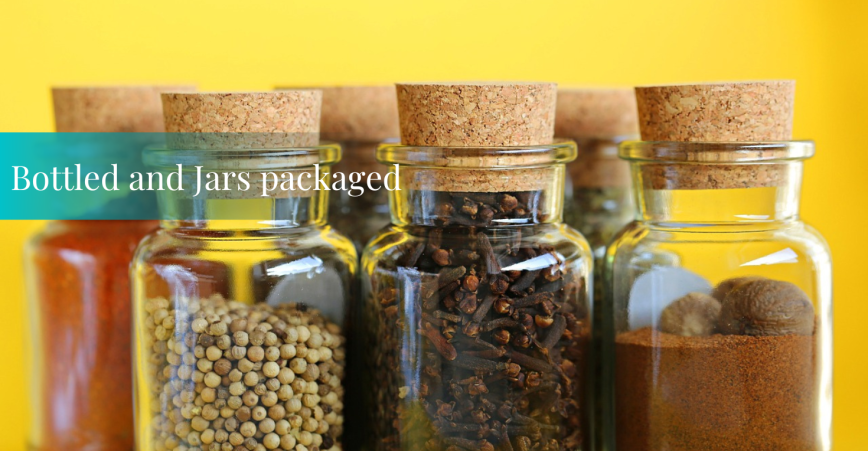
They are lightweight and convenient but not as airtight as glass containers. Cans: Metal cans provide a great barrier against moisture, thus protecting dry goods such as beans and pasta. However, they tend to be heavy which makes shipping expensive. Plastic Bottles: Plastic bottles are very common today because they can be placed on store shelves without being refrigerated or frozen. However, some plastics can leak chemicals that could have adverse effects on our health such as BPA (Bisphenol A).
Modern glass canisters or plastic bottles contain bottles of goods. Containers such as cans, glass jars, boxes, and plastic tubs are used to sell packaged goods. This includes vegetables, fish, meat, and shellfish. As well as non-food items, like toothpaste, shampoo, pet food, and gardening supplies, this category also includes many other items.
Bottle Packaged Goods Are Items That Can Be Found At Home In Most Grocery Stores Or Convenience Stores.
They’re easily accessible for shoppers looking for something quick to eat or drink on their way out the door or on their way home from work.
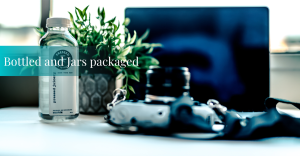
Bottled and Jarred, also known as packaged goods, are products that are available in modern glass canisters or plastic bottles. Containers such as cans, glass jars, and boxes are used to sell packaged goods. This includes vegetables, fish, meat, and shellfish. It also includes non-food goods such as toothpaste, shampoo, pet food, gardening supplies, and much more.
To prevent drinking tap water, people use bottled water. Many packaged items are sold in glass containers with sticks, which are healthier than dubbed goods. The advantage of glass containers is that they can be reused or reused. Also, they do not contain any harmful chemicals that can contaminate the food.
Most packaged foods on the market are safe to use. However, some of these packaged foods need to be handled and properly stored to prevent bacterial growth. For example roasted fruit. There are also packaged foods that need to be reheated before eating.
Provides a wide range of packaged products in grocery stores. The good thing about these packaged goods is that they are inexpensive and generally have a long shelf life.
The History Of Packaged Goods In Bottles And Jars
With the advent of refrigerators in the 19th century, the popularity and use of packaged and bottled products have skyrocketed. Before that, there was no good use of bottles and accompanying packaged products.

The 19th Century refrigerator arrives in the midst of bottles and associated packages to supply fixed use and popular heavenly goods. Before that, no use of bottles and attached packages was to no avail.
Later came the icebox, which allowed people to store their food for several hours. Then they had no better option than to bottle and attach packages.
However, bottled and packed packages were not used for all types of food. It is commonly used for food products such as meat, pickles, fruits, vegetables, milk, fish, and many others.
Jars And Bottles Of Packaged Goods
When it comes to buying food and drinks, you should have a clear idea about these products, so you can determine which ones are good for you. In this case, the quality of the bottles and jars is also important.
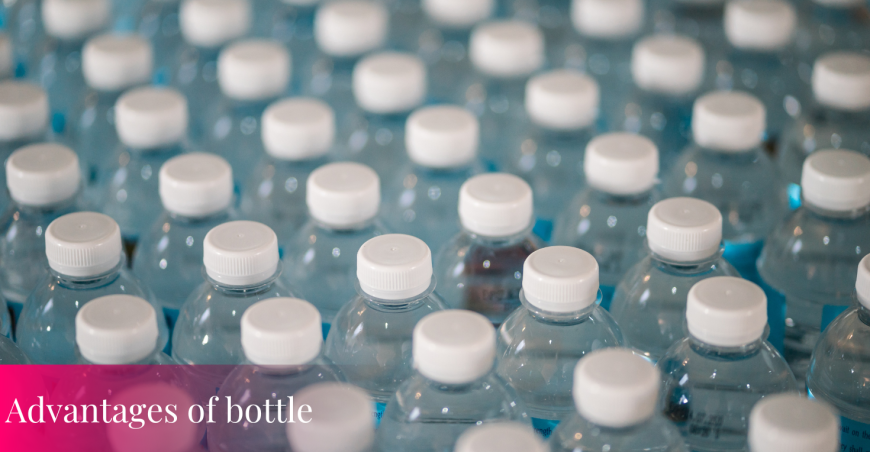
There was a time when packing was just to protect the good stuff. But today, they use advanced technology to pack goods in a way that is convenient for both retailers and consumers.
Bottles and attached packaged goods are often used by buyers to store drinks and food. This allows them to store it for longer periods of time, without spoiling it.
The packaging used also prevents the food from getting damaged by the sun’s rays or other environmental factors. Nowadays, these packages are used to pack fish, vegetables, meat, juices, milk, pickles, and other items.
Packing Food In Bottles and Jars
Speaking of bottles and packaged goods, there are six types of packaging. We are going to discuss them all to give you a better idea.
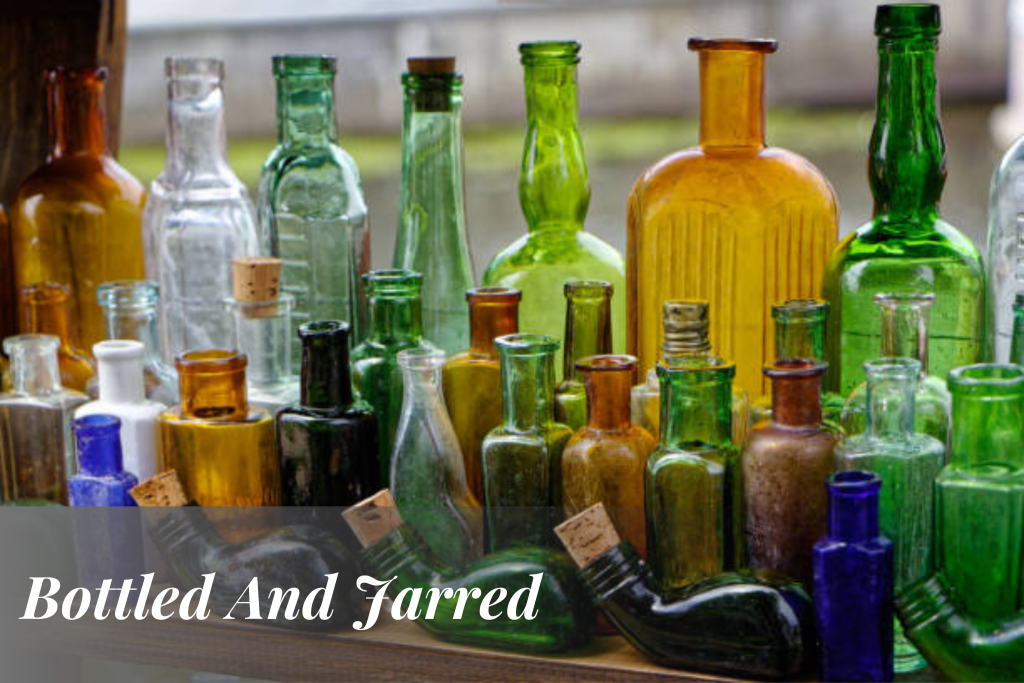
Plastic bottles
This is probably the most popular type of packaging used in the market. Plastic bottles and attached packaged goods are often found in the garbage bin. Disposal of these packaging can take more than 1,000 years.
Another problem is that plastic bottles are not effectively reused. In most cases, after recycling, they decrease in quality. To increase it, plastic bottles will be dumped into landfills, resulting in the release of toxic chemicals into the groundwater and soil.
Just so you know that plastic bottles are a major cause of environmental pollution. They are made from petroleum and used for packing and beverages. The problem is that they are not renewable, which makes them unsuitable for the recycling process.
Edges Of Glass
Glass canisters make a great option because they are renewable and recyclable. They offer a square glass shape and are available in different shapes, sizes, and thicknesses. The glass is clear so they do not fade colors or alter smells as long as they are sealed tightly between uses.
Glass is an attractive and elegant solution for storing loose-leaf teas, coffee, or sugar. It offers a square shape and is available in different shapes, sizes, and thicknesses.
Glass canisters are great to use in your kitchen because they are affordable and environmentally friendly. Glass is renewable, so you can use these canisters over and over again.
There are several benefits to using glass edges with airtight sticks. For example, it inhibits the growth of bacteria. Not only this, but it also does not allow the release of toxic chemicals when frozen or in the microwave.
Glass jars or containers provide a closed environment for food. It helps prevent debris and pollution. They are usually turned off air, so you can use them to store liquid.
Glass Jars Are Made Of Bulk Tempered Glass That Is Durable And Easy To Maintain.
Cardboard Packaged Goods
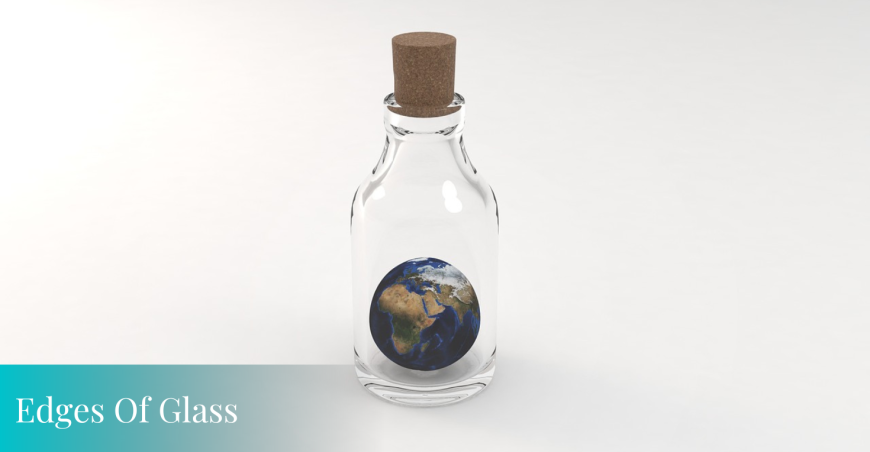
Cardboard bottles and integrated packaged goods are not only more affordable, but they are also environmentally friendly. It also acts as a great alternative to tinplate, plastic, and aluminum. Cardboard packaging comes with lower production costs which makes it beneficial for the company. In addition, it is also easy to ship, store, and recycle.
Cardboard packaging is popular because it is lightweight and inexpensive. You can use them to promote your products as many brands do.
When it comes to designing cardboard packaging for your product, you need to consider the material’s durability, how cost-effective it is, and the limitations involved.
The Wooden Packaging
Next comes the wood packaging that serves as a sustainable choice. Many brands opt for wood packaging because it is good for both the product and the environment. This is the reason why wood packaging is increasing in popularity every year.
Instead of artificial materials, the wood packaging is made of three parts. It usually has a rich appearance and texture.
There are many benefits to wood packaging. They look aesthetic and have quality features, which make them a delight to use. Unlike other packaging materials, wood packaging is renewable, biodegradable, and recyclable. It is also cheaper than many other packaging materials.
Despite all the good things, it does have some drawbacks. First off, it’s not as durable as metal or plastic. Second, it does not offer many customization options.
Using Aluminum Containers
Aluminum bottles and attached packaged goods are made of standard aluminum. This type of packaging is lightweight and more durable than plastic and glass.
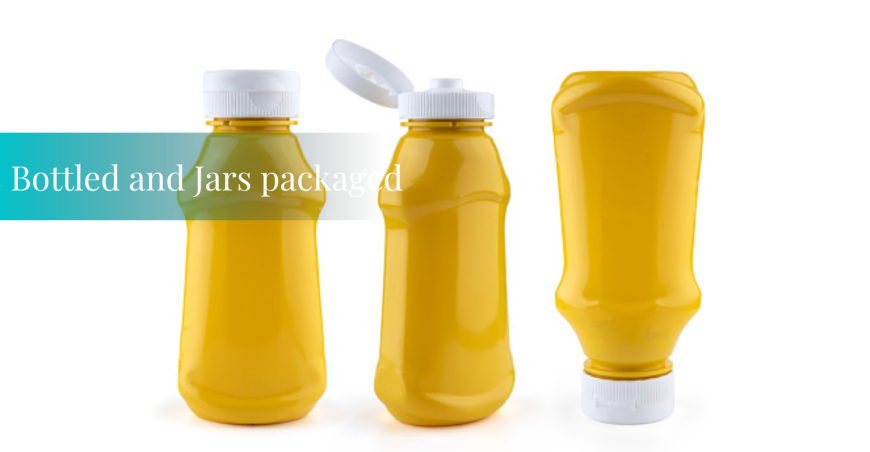
One of the biggest benefits of using aluminum containers is that they can be reused. They also serve as a good alternative to expensive glass packaging.
Due to their lightweight, aluminum cans and packing can be easily shipped and without extra packing charges. Not to mention, it also acts as a durable option, better than glass and steel.
Aluminum containers are extremely strong and durable. They are practical and safe. This is one of the reasons why so many companies have been opting for aluminum packaging in recent times.
Aluminum containers can be used to pack both food and liquids. This is more needed than other ingredients and does not react with food and drinks. It is commonly used to pack cheese, tea, milk, coffee, etc., and is also available in various sizes and shapes.
The Metal Containers
Metal containers are very popular in the food industry because they are used to store various food products. They are usually made of toned plated steel, which are corrosion and economically resistant. They also do not react with acid food.
Metal containers are used for preserving and storing food using either heating or cooling the contents inside the container. Not only is metal a durable material, but it’s also non-reactive so you don’t have to worry about leaching harmful chemicals into your food. Metal lunch containers are compact and can fit in any bag, making it super convenient to carry nutritionally packed lunches on the go.
Another benefit of metal containers is that they are durable and reliable. They use quality steel to manufacture these containers.
Different Types Of Jars And Bottles
There Are Various Types Of Bottles And Jars. These Include:
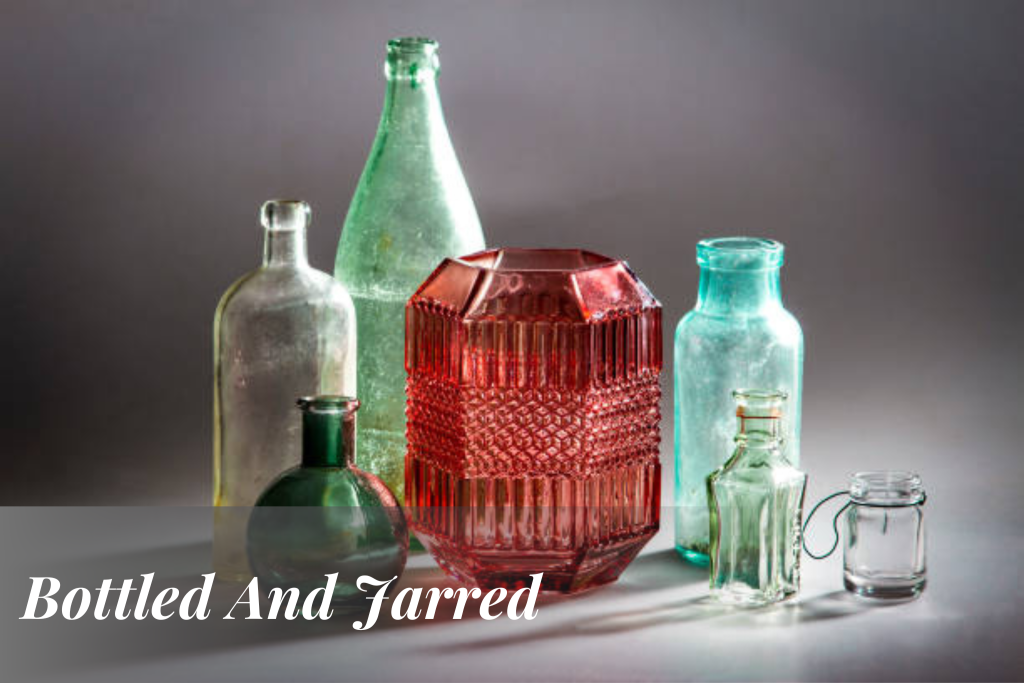
Glass: When it comes to bottled and packaged goods, glass is one of the most used materials. Almost all manufacturers produce bulk glass jars for packing food and supplies. Glass jars are usually made using small and largemouth types.
Victoria: Victorian Containers are one of the most durable types of containers available in the market. These containers are extensive and used to store items such as mayonnaise, pickles, etc.
Paragon: This type of container is mostly used for storing gas, olives, etc. You can easily identify a Paragon container by design. It features a very long and thin frame. It not only serves as efficient storage for the goods but also looks attractive.
The Advantages And Disadvantages Of Bottled And Packaged Goods
The advantages and disadvantages of packaged and bottled goods are different. We have discussed each of the following advantages and disadvantages.
Hygiene: The most important thing about packing goods is hygiene. The container should be clean and tidy. Glass containers and jars are best because they do not expose harmful rays, do not oxidize, or affect the contents. You can thermally It can be placed anywhere and is easy to use. pack the products in glass jars and prevent them from spoiling.
However, one thing to keep in mind is that it will vary from packaging to packaging. What may work for glass does not work for packaging’s such as steel and aluminum.
Storage For The Long Term
This is yet another benefit that you get from the bottles and the packaged goods. It acts as a scalable, inexpensive solution that can be applied to any data.
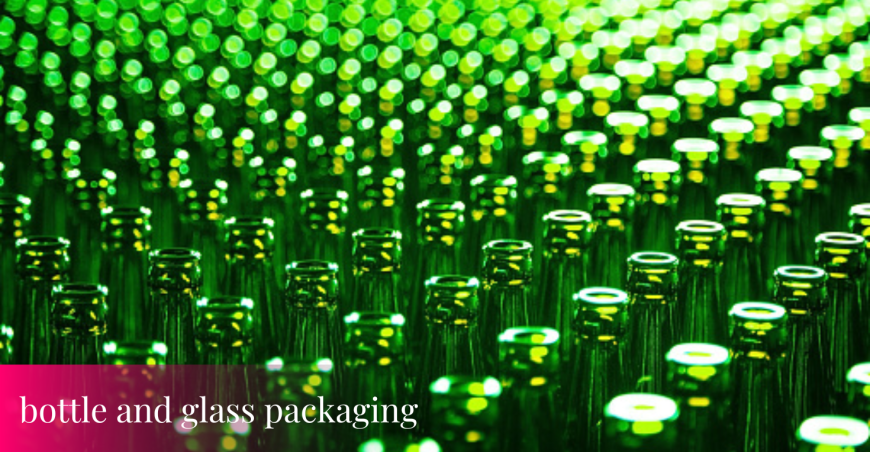
It provides organizations with cost-effective long-term data storage, so you can use some of the equipment and store the rest properly.
This solves the problem of long-term storage. It helps you save and store both goods and will remain for generations to come.
Duration: As you already know, the packaging is an important part of the entire supply chain. It helps you pack food and drinks and deliver it safely to customers. In addition, it also affects the longevity of different products. The shelf life of a food product is influenced by various factors such as temperature, packaging type, moisture level etc.
With the right kind of packaging, you can store the food items for a long time and thus, extend their shelf life.
Transparency: One of the cool things about glass jars is that they are transparent. It allows you to see what’s inside. You can identify the product inside without even hiding it.
This makes shopping easy and fast because you know what you are buying.
Convenient: Bottles and packaged goods are also handy. It’s easy to use and can be placed anywhere.
For example, you can take it on a long trip with you or deliver it to someone else. It’s extremely portable and easy to handle. This is another great reason why customers prefer bottling and jar packaging.
Environment Friendly
Good glass packaging is environmentally friendly. This is because it is 100% recyclable and does not harm the environment at all. Unlike other packaging materials, glass does not contain metal. This means that it can be easily and reliably reused without increasing the quality and quality.
Of all the packing materials, glass is the most environmentally friendly material. This is the reason manufacturers make large glass jars for packing food. The best types of glass containers are those with airtight lids.
Cost-Efficient: In terms of packaging, packaged goods are more expensive and convenient. They can be used to store food for longer periods of time. Also, packing jars is easy to find at your local grocery store.
The packing of the jar is better than the luggage compartment as it consumes less space. Not only that, but they are also more affordable. You can easily buy a stew or a pot of soup and keep it in your home.
Bottles and jars also offer greater control over product quality. For example, a glass vessel is likely to spend more time than packing cardboard. Packaged foods are great because they are sold in easy packaging.
Stores and Transport
Packaged and bottled goods are easy to store and transport. They are also safer than unpacked foods. That’s not all; You can reuse the bottles and the attached packaged goods.
Foods stored in glass jars have a longer shelf life. You can save them without worry or fear. Plus, they are easy to pick up and transport.
The quality of the food
with healthy ingredients. But you cannot eat healthy if you do not know how to cook healthy. Due to the high-quality packaging, the material inside the jar remains in good condition.
Food packed in jars is usually prepared food, which means it can be prepared by anyone. Instead of cooking, all you need to do is put the ingredients and heat them. They are not only easy to eat but also taste. Plus, you can prepare them quickly and easily. Different sizes and shapes are available
The other great benefit of bottled and packaged goods is that they are available in different shapes and sizes. It’s an ideal choice for wine, juice, and jam. It lets you easily move them anywhere.
Glass jars are environmentally friendly and, therefore, they are liked by many companies. They are also good for home use and can be refrigerated when needed. Companies rather use glass jars and adjust them to their needs. In addition, bottles and glass jars are reusable, reusable, and bio-degradable.
Disadvantages Bottled And Jarred
Delicate packaging: Bottled and sealed packaging can be easy and straightforward to look at, but they are delicate. As they are made of glass, they are easy to break. Due to their fragile nature, glass bottles and alloys can be difficult to handle or transport.
Expensive: As glass is a delicate material, it is very expensive to tolerate. Compared to other packaging materials, the cost of glass packaging is higher.
Environment: The environment is part of our daily lives. It provides us with water, air, and food to survive. It is our responsibility to take care of our environment.
Unfortunately, a large part of the waste comes from consumer packaging products. We dispose of packaging materials in landfills that pollute the environment.
Importance Of Packing: Good packaging is everything and makes a lot of difference. Manufacturers spend a good amount of money on packaging, so they can safely and securely store and transport goods.
The purpose of the packaging is to prevent the food from getting spoiled or contaminated. It protects against all possible damage. The importance of packaging stems from the fact that it preserves food and protects it from outside harm. Foodstuffs are dangerous for bacterial growth. But glass packaging helps keep food and beverages safe for months.
Manufacturers place a lot of importance on the packaging. This not only helps keep the content safe but also allows for easier delivery. It makes everything a lot easier. Each type of packaging has some advantages and disadvantages. The packaging material to be selected depends on the package to be packaged. It is very important to choose the right packaging, as it affects the shelf life of the product. Various types of packaging are used for different purposes.
Reasons Why People Choose Bottles and Fittings
Now that we have discussed the advantages and disadvantages of bottles and associated goods, let’s talk about their popularity. Or do people choose bottled and packed goods over other things?
Food Stored: When it comes to buying food products, most buyers prefer packaged foods. They believe that packaged foods are better and healthier than those packaged products, which is true in most cases. The benefit of buying packaged foods is that they are safe from germs and bacteria. They carry product details and also look attractive.
Easy To Carry؛ Compared to unpacked foods, packaged foods are easier to carry. This is the reason why people prefer bottles and packaged goods. They can easily carry it to their homes and store it until the contents of the jar are removed.
Brands؛ Packaged foods have the brand name on them, so it’s easier to identify them. It helps you to differentiate between the products and the brand you most like.
Definition Of Food؛ In addition to the brand name, packaged goods also carry food details. It comes with a label, where you can read prices, components, production date, expiry date, quantity, and other product details.
Safe And Secure Packaged Goods
Packaged goods are available in glass jars and containers. This makes it safe to use. This ensures that the product is in good condition and not contaminated with germs and viruses.
Are bottles and packaged goods good for consumers?
Bottles And Packaged Goods Are Good For Consumers For A Variety Of Reasons. These include:
- Unlike plastic bottles, glass jars do not repel harmful chemicals in the water that they contain.
- Glass is a renewable material. It can be reused infinitely without increasing its quality and purity.
- You can easily microwave glass jars without problems.
- Glass-rich foods can be frozen without the chemicals in their contents.
- Glass enclosures make it a great choice for the environment cause it is reusable and reusable.
- The edges of the glass along the lines have a tight seal that prevents the food from spreading.
- The glass is more refreshing than the herbicide. This is because there is no metal in the glass so that it enters the food over time.
- Glass jars are much cheaper than plastic bottles. They also use less energy to generate and reuse.
- To avoid being trapped in plastic bottles and containers, you should go for a glass of solid food.
- Packaged Goods That You Should Avoid Buying
- Packaged goods are good, but there are some items you should avoid buying.

Agave Syrup
Agave syrup is not only expensive, but it also has a bitter and sweet taste, which gets worse when heated. It is also not good for your health. If you want to get a good heads up, you should look at other exchanges. The market offers a number of options, which is a good thing. You should choose an alternative that has no negative side effects.
Anything Labeled “Effective”
If you look at any packaged food that says “manufactured”, it means bread, flour, and pasta with compromised nutritional value. Eating rich foods is not good for your body. These are low nutritional items that will make you feel tired and lazy.
Vegetable Oil
If you think fried vegetable oil is good, you’re wrong. Oil such as soybeans, canola, butter, and vegetable oils are usually derived from genetically modified ingredients. When purchasing packaged oils, you are subject to negative side effects on your health. The use of such products can lead to chronic inflammation and also increase the risk of cancer.
Anything That Is Considered “Fortified”
Packaged fortified refers to the products that are made by adding mineral and vitamin supplements. These foods are designed to meet the nutritional deficiencies in your body. But it can have different side effects, so it’s best to avoid buying them.
The Result On Bottled and Jarred Packaged Goods
The Bottled and Jarred packaged items in the glass jars are good and safe for the environment. But packaged food in plastic containers is harmful to the environment because they exclude harmful chemicals. Now that you are familiar with the details of bottles and packaged goods, you should choose carefully.
Answers To Frequently Asked Questions About Bottles and Jars
Are Packaged Goods Packaged Goods?
Packaged goods are products that are sold in containers such as jars, bottles, tins, packets, cans, and boxes.
What Is The Cost Of Packaged Goods To Manufacturers And Customers?
Packaging is an important part of the production process. It helps protect the equipment from damage and pollution. It also helps manufacturers to ship and transport goods safely by Boston drives. On the other hand, the packaged goods assure quality to the customers. It simplifies storage and increases the product lifespan.
Bottles Or Attachments, Which Should You Choose?
Bottled and Jarred packaged goods are very popular worldwide. They are equally good, so you should choose one based on your budget and personal needs.
Are The Bottled And Enclosed Packaged Goods Harmful To The Environment?
Bottles and well-packaged goods in glass containers are not harmful to the environment. However, there are plastic bottles, as they expel harmful chemicals.
What Causes Eating Disorders?
Eating disorders are often caused by microbes that grow at a proper temperature and humidity.
How Do Extend The Shelf Life Of Bottled And Packaged Goods?
By choosing the right packaging materials, you can increase the age of frozen and packaged goods.
Are Packaged Foods Safe To Eat?
Most fried foods are safe to eat. But some may need proper storage and maintenance to keep it from polluting soil, dirt, and other pollutants. Some packaged items also need to be heated before eating.
Conclusion
All four types of Goods packaging have their own advantages and disadvantages but they are all helpful in protecting the foods we eat from spoilage and contamination by harmful bacteria, insects, and other contaminants.
